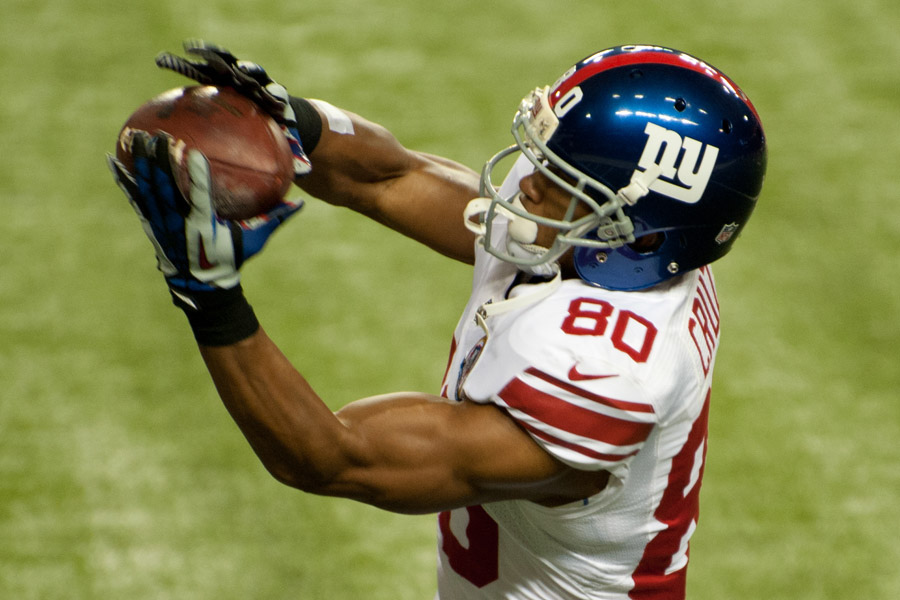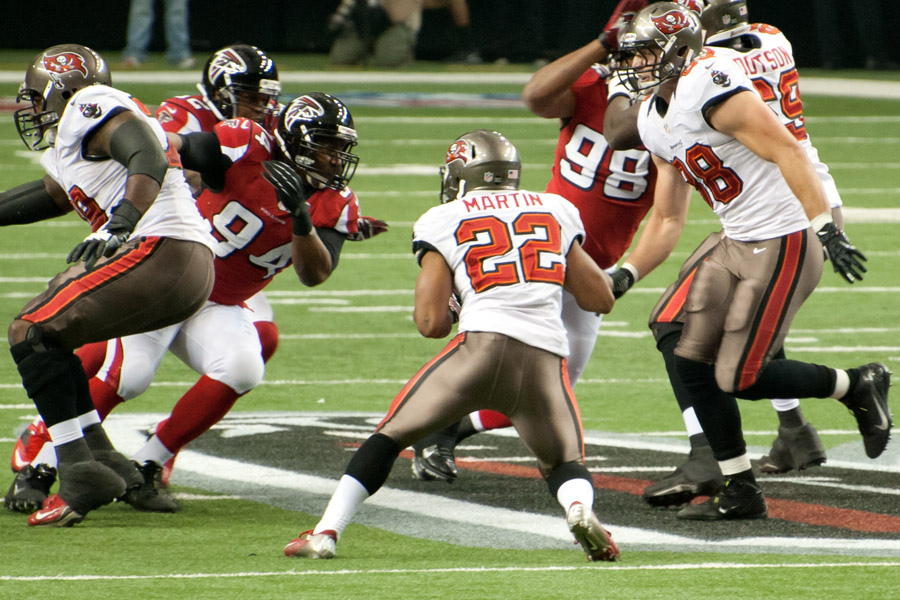
Geno Smith may not be a quarterback I’m super-excited about as an NFL prospect, but it doesn’t mean he won’t develop into a decent starter. Smith’s game travels to the Boiler Room where I distill what makes him a solid prospect at the position, including a tangent about a player who belongs in the family of quarterbacking styles where Smith resides – Bruce Gradkowski.
A series I started this year at the RSP blog is The Boiler Room. One of the challenges involved with player analysis is to be succinct with delivering the goods. As the author of an annual tome, I’m often a spectacular failure in this respect.
Even so, I will study a prospect and see a play unfold that does a great job of encapsulating that player’s skills. When I witness these moments, I try to imagine if I would include this play as part of a cut-up of highlights for a draft show at a major network or if I was working for an NFL organization creating cut-ups for a personnel director. Unlike the No-Huddle Series, The Boiler Room is focused on prospects I expect to be drafted, and often before the fourth round.
It’s incredibly difficult to boil down any player with just one play, much less a quarterback. Yet, if I need a play to add to the highlight reel that will help a team make a decision where to slot Geno Smith on its board, this is my nomination. Actually, I’m breaking my own rule and supplying two for Smith. Both plays are displays of pocket presence.
The Gradkowski Tangent
Before I do, I’m leading off this Boiler Room installment with a quarterback who I believe fits in the Tony Romo-Rich Gannon spectrum of quarterbacks where I would place Smith in terms of his playing style. If you’ve read my work at this blog long enough then you know I place great value on a quarterback’s skill to maneuver a pocket. A quarterback can have all the physical tools and accuracy to become an NFL superstar, but if he lacks the feel for the pocket and the mental and physical discipline to make the subtle adjustments in tight quarters to avoid the rush and stay prepared to throw the ball then the gloss of his promise is not as bright in my eyes.
Likewise, if the passer lacks the plus-arm but commands the pocket even as its walls are crumbling at his feet, then I at least know he’ll be a serviceable player. I’m not 100 percent on board with this statement, but I’m close.
This affords me a moment to talk about a player whose game I appreciate – perhaps too much when I first began a formal method of study for the Rookie Scouting Portfolio eight years ago, but in the scheme of quarterbacks that are still standing, perhaps not enough – Bruce Gradkowski. I thought the former Toledo star had as good or better feel for the game – and especially the pocket – than any of his peers in that 2006 quarterback class that included Jay Cutler, Matt Leinart, and Vince Young.
At the time, Gradkowski was the only passer in NCAA history to complete 70 percent of his passes for two seasons and this was in an offense where Gradkowski dropped from center. He also ran a 4.59-second 40 at the combine and was among the better all-around athletes at the position in the drills at the NFL Combine. I had Gradkowski ranked fourth behind Cutler, Young, and Leinart.
He was in a virtual tie with Leinart. The only reason I had the USC quarterback above Gradkowski was at that time, I wasn’t writing an RSP post-draft publication and I had to account for opportunity. What I didn’t expect was Gradkowski doing well enough in the preseason that Jon Gruden opted to start the rookie in Tampa Bay.
I was tempted to wait on a quarterback in this RSPWP2 Draft, take Gradkowski, put him in a west coast offense, and damn the jeering from the cheap seats. The only thing that Gradkowski lacks is a franchise-caliber arm and if surrounded by great talent, he could have that Rich Gannon presence I believe Gruden saw in Gradkowski when the coach drafted the Toledo Rocket.
[youtube=http://youtu.be/gDWEiHxdw1U]
This was Gradkowski’s third touchdown in the fourth quarter to beat the Steelers in Heinz Field. If you didn’t know, the Steelers signed him in the offseason as Roethlisberger’s backup. In Todd Haley’s quick-decision, short(er)-passing offense, it’s a good fit.
Watch how economical Gradkowski is in the pocket. He’s also willing to step into the pocket and take the hit to make the throw and even the incomplete passes are accurate throws under pressure where he often throws open his target.
2:51, 3:20, and 6:19 to the end of the clip
[youtube http://www.youtube.com/watch?v=b1k-EwFiLWM&start=220&w=560&h=315]
It’s a simple-looking throw, but the willingness to stand in the pocket and use his athleticism in tight spots and odd angles to distribute the ball under pressure is something that he has in common with Romo, Gannon, and Smith. These small plays make a difference. If you watched Jon Gruden’s QB camp with Matt Barkley this week, then you saw the coach tutor Barkley on the same basic play that grilled Andrew Luck for messing up at Stanford. The play is a short-to-long read that is practically an automatic dump to the fullback in the flat.
During the episode, Gruden laments that only the Peyton Mannings of the football world seem to realize that you “can’t lose money when you’re always making a profit.” Young quarterbacks are often too aggressive and overconfident and they don’t know how to balance when to pick apart a team and when to go for the jugular. Gradkowski has this balance – just not the vast arm talent. This touchdown pass is another good example of how a player must be willing to stand in and own the pocket.
[youtube http://www.youtube.com/watch?v=b1k-EwFiLWM&start=171&w=560&h=315]
This play required some eye manipulation and a pump fake to set up the safety and the patience to hang in the pocket to complete the throw on time. Gradkowski demonstrated this at Toledo and his stints with the Bucs, Rams, Browns, Bengals, and Raiders. The fact that I mentioned five teams in a seven-year career means Gradkowski is an utter failure if you’re a fantasy football owner, but only NFL media and marketing cares about your fantasy interests.
But if NFL operations – specifically individual team operations – values a player who can put his team in position to win. The final two plays on this video below are the type of plays that give a receiver a chance to win the game and Gradkowski has a knack for it.
[youtube http://www.youtube.com/watch?v=b1k-EwFiLWM&start=379&w=560&h=315]
I’m not touting Gradowski as a future superstar. However, it is important to show that a quarterback can have long-term value in the NFL if arm strength isn’t at the top of his resume, but the top two bullet points are pocket presence and accuracy. He’s a savvy quarterback who I still believe can be an effective starter in the right situation.
Of course, there aren’t many of these situations in the league and fewer would value him as a long-term option. The importance of this tangent is that if Geno Smith were to fail as a starter that his style of quarterbacking will make him a viable long-term backup who can fill a need for several teams. It means Smith has little downside as a talent – even if he doesn’t work out as an initial investment with a team.
Smith in the Boiler
Unlike Gradkowski, Geno Smith has enough arm strength to earn a spot on a draft board for most teams as a future starter. What you just saw from Gradkowski is where I think Smith has potential. I like the Mountaineer’s wherewithal in the pocket.
This is a 3rd-and-18 pass with 9:23 in the third quarter and a 10-point lead at their own 29. Forget about analyzing Smith’s read of the coverage and just watch how he maneuvers a pocket against a four-man rush.
[youtube http://www.youtube.com/watch?v=I1zqqutj6Uo&start=440w=560&h=315]
Maryland may only send four defenders, but the defense does a good job of constricting the pocket. The end forces the left tackle backfield and in this situation many quarterbacks try to break the pocket inside the right tackle and are dropped before they reach the line of scrimmage. Smith escapes the blind side rush with the intent to throw down field.
Although he his initial climb of the pocket is as fast as most quarterbacks move when they drop their eyes and run for the escape hatch, Smith’s head remains up and his eyes on his receivers. When he feels the defensive tackles collapsing the middle and clogging his passing lane, Smith moves just like the quarterback footwork drills you always see in practice but not performed this textbook in a game.
The West Virginia quarterback slides to his left, remains in a throwing position and find the comeback for positive yards. This leads to a punt, but with a 10-point lead in their own territory, this is a good outcome.
Maryland shows Smith the possibility that it is sending seven defenders on the next play; opting for five at the snap. What I like about this play is Smith’s ability to work though pressure up the middle.
[youtube http://www.youtube.com/watch?v=I1zqqutj6Uo&start=495w=560&h=315]
This isn’t just a climb of the pocket. While a nice thing to see from all quarterbacks, I especially like the way Smith waits until the last moment to avoid the middle linebacker coming free of the running back up the middle. Although the difference is tenths – or even hundredths – of a second between a quarterback I’d consider patient and one who not, the extra beat that Smith waits to look down field before opting to reduce his shoulder and climb is a critical part of having “feel” for his surroundings.
I also like that he sees the pocket one step ahead and his already working to the inside of the next rusher so he can slide to the open lane and deliver the ball on this 2nd-and-two play. Although the receiver drops this pass in tight coverage and one could make a weak argument that tucking and running was a better recourse, I think if you isolate Smith’s skill to maneuver and deliver on this play and others like it, you see a budding field general.
I’m not as high on Smith as others, but I do believe he has the basic skills to develop into a successful starter and pocket presence tops the list.
For analysis of skill players in this year’s draft class, download the 2013 Rookie Scouting Portfolio available April 1. Prepayment is available now. Better yet, if you’re a fantasy owner the 56-page Post-Draft Add-on comes with the 2013 RSP at no additional charge. Best, yet, 10 percent of every sale is donated to Darkness to Light to combat sexual abuse. You can purchase past editions of the Rookie Scouting Portfolio for just $9.95 apiece.












